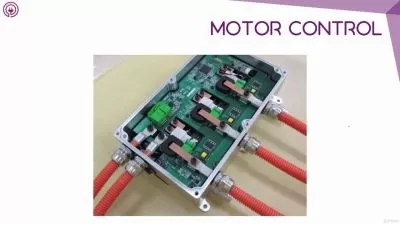DFMEA and PFMEA in the industry
1:03:14
Description
Design and assembly a reliable product in your company
What You'll Learn?
- FMEA: definitions and function
- DFMEA and PFMEA: differences
- Why is the FMEA so important?
- Analysis step by step of the creation of a FMEA
Who is this for?
What You Need to Know?
More details
DescriptionLearn the methodology to create DFMEA and PFMEA, very powerful tools to be able to design and assembly reliable products. This method is suitable for all the industries. FMEA (Failure Mode and Effect Analysis) is very important in the industry and it's crucial the timing of performing them. I am an exprienced automotive engineer, specialized in Quality... in my experience in companies as Audi, Jaguar Land Rover Special Vehicles, Alfa Romeo I have improved this ability to vreate and coordinate a group of FMEA. It's a very important activity and involve different departments.
FMEA is a structured approach to identifying, analyzing, and mitigating potential failures in a system, process, or product. It's a proactive tool that helps organizations prevent problems before they occur, improving quality, reliability, and safety.
How FMEA Works
Identify Potential Failure Modes: This involves brainstorming all possible ways in which a component, process, or system might fail.
Determine Potential Causes: For each failure mode, identify the root causes that could lead to it.
Analyze Potential Effects: Evaluate the impact of each failure on the overall system, product, or process.
Assess Risk: Assign a risk priority number (RPN) to each failure mode based on its severity, occurrence, and detection.
Implement Preventive Actions: Develop and implement strategies to reduce the likelihood of the identified failure modes.
Review and Update: Periodically review the FMEA to ensure it remains relevant and effective.
Benefits of FMEA
Proactive Problem Solving: Identifies potential issues before they occur.
Improved Quality: Helps ensure products and processes meet customer expectations.
Enhanced Safety: Reduces the risk of accidents and injuries.
Cost Savings: Prevents costly failures and rework.
Regulatory Compliance: Supports compliance with industry standards and regulations.
Who this course is for:
- Everyone interested in quality and reliability of products
Learn the methodology to create DFMEA and PFMEA, very powerful tools to be able to design and assembly reliable products. This method is suitable for all the industries. FMEA (Failure Mode and Effect Analysis) is very important in the industry and it's crucial the timing of performing them. I am an exprienced automotive engineer, specialized in Quality... in my experience in companies as Audi, Jaguar Land Rover Special Vehicles, Alfa Romeo I have improved this ability to vreate and coordinate a group of FMEA. It's a very important activity and involve different departments.
FMEA is a structured approach to identifying, analyzing, and mitigating potential failures in a system, process, or product. It's a proactive tool that helps organizations prevent problems before they occur, improving quality, reliability, and safety.
How FMEA Works
Identify Potential Failure Modes: This involves brainstorming all possible ways in which a component, process, or system might fail.
Determine Potential Causes: For each failure mode, identify the root causes that could lead to it.
Analyze Potential Effects: Evaluate the impact of each failure on the overall system, product, or process.
Assess Risk: Assign a risk priority number (RPN) to each failure mode based on its severity, occurrence, and detection.
Implement Preventive Actions: Develop and implement strategies to reduce the likelihood of the identified failure modes.
Review and Update: Periodically review the FMEA to ensure it remains relevant and effective.
Benefits of FMEA
Proactive Problem Solving: Identifies potential issues before they occur.
Improved Quality: Helps ensure products and processes meet customer expectations.
Enhanced Safety: Reduces the risk of accidents and injuries.
Cost Savings: Prevents costly failures and rework.
Regulatory Compliance: Supports compliance with industry standards and regulations.
Who this course is for:
- Everyone interested in quality and reliability of products
User Reviews
Rating

Udemy
View courses Udemy- language english
- Training sessions 7
- duration 1:03:14
- Release Date 2024/12/05








